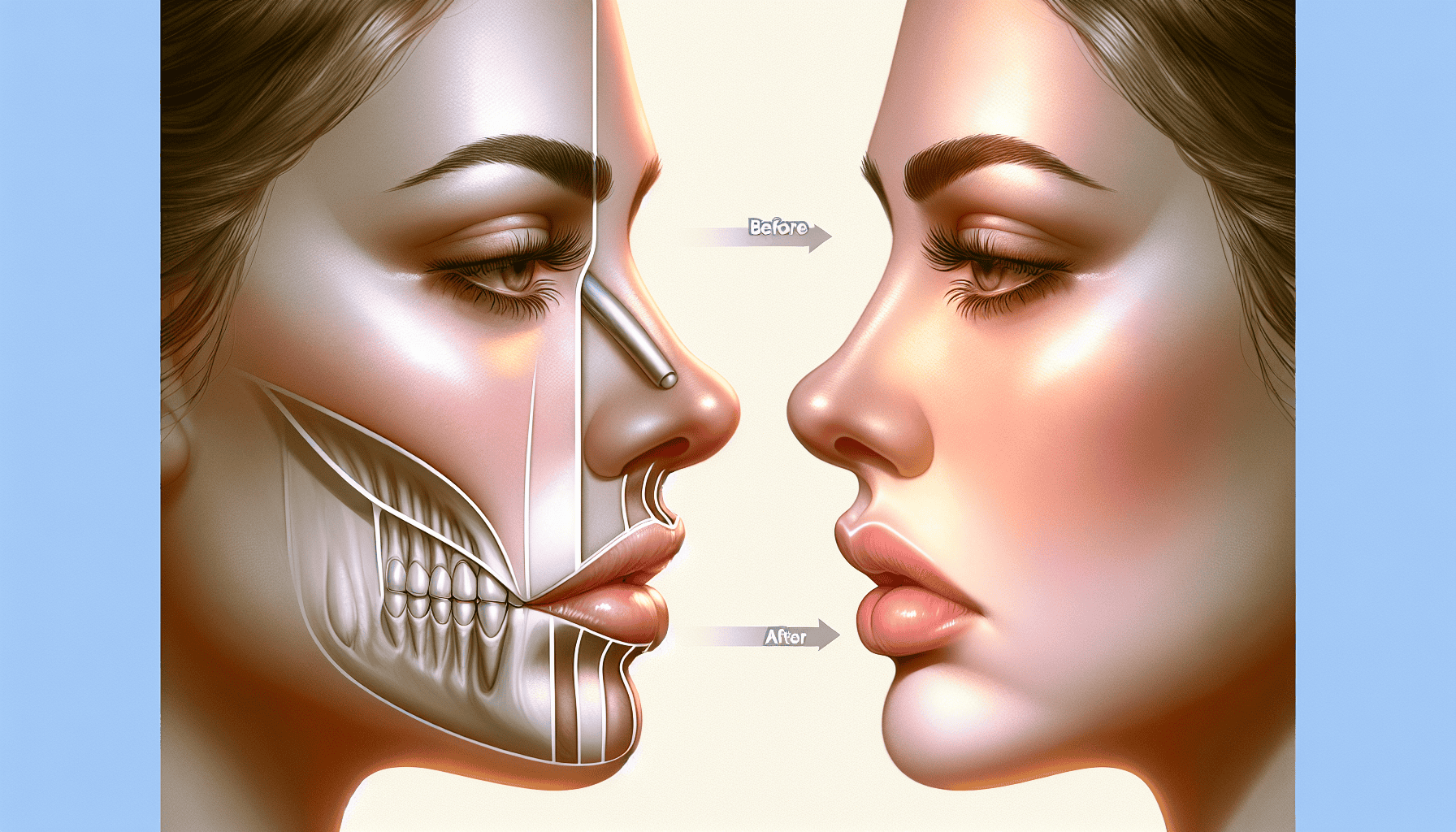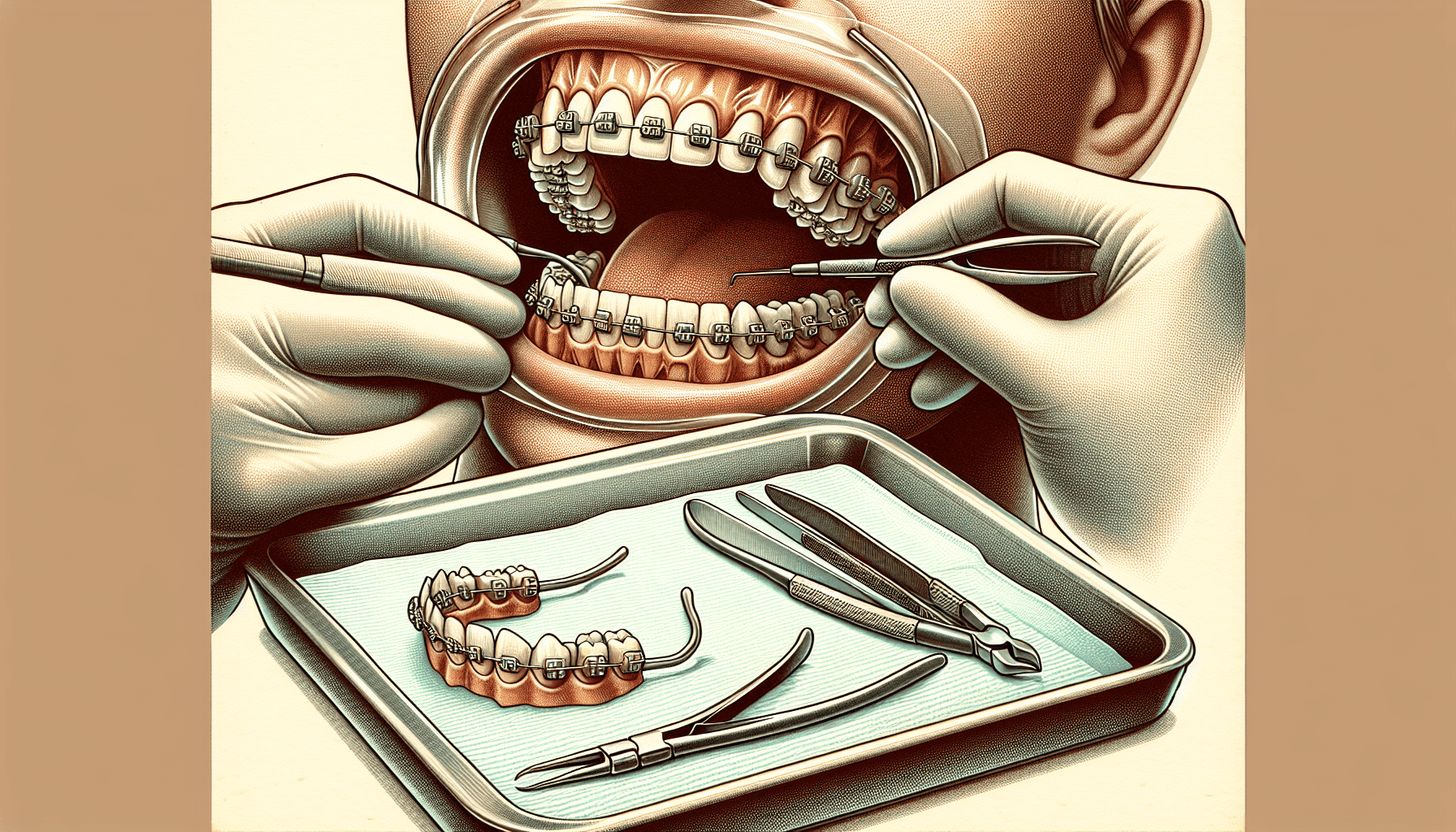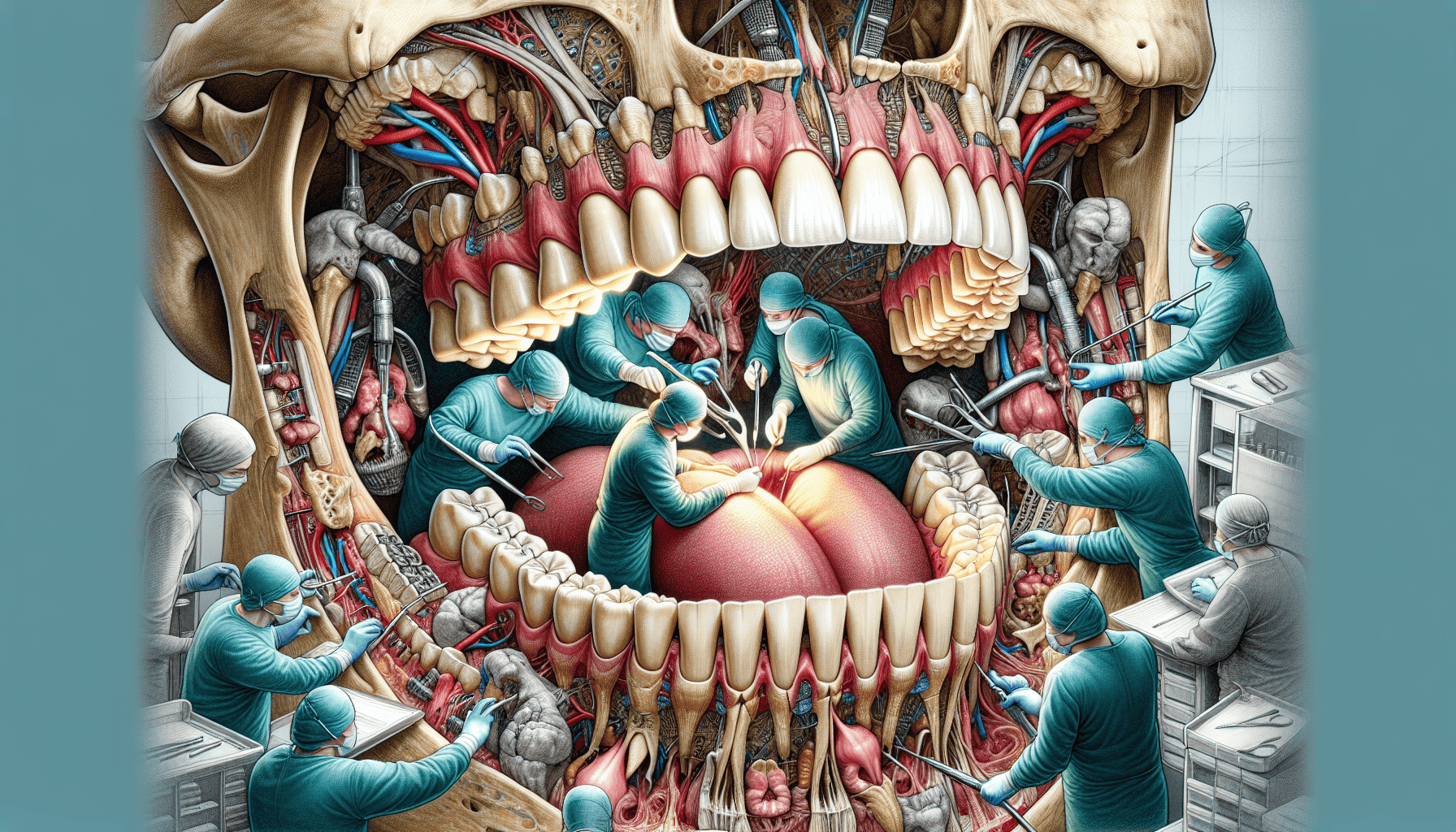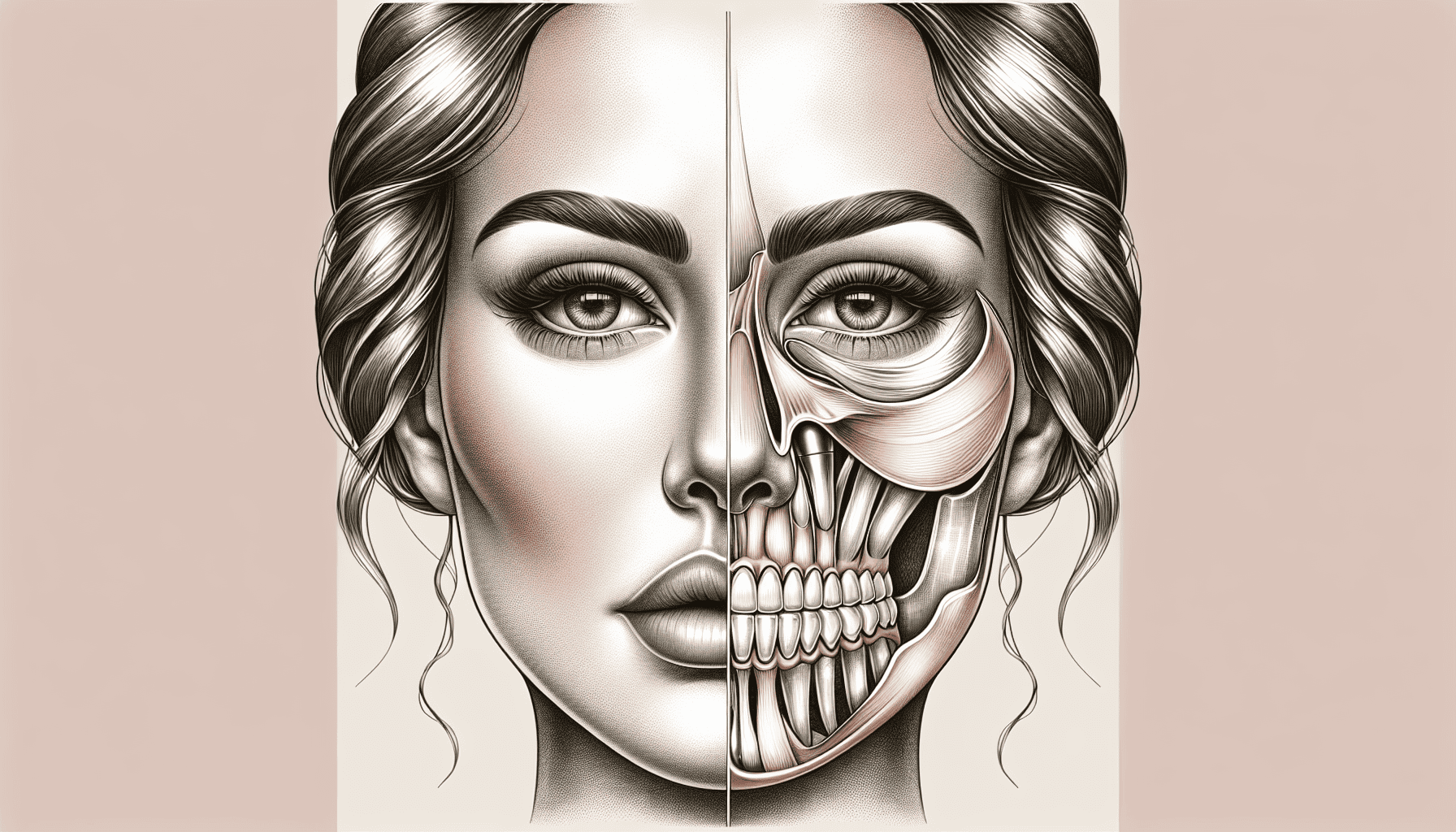Extraction Retraction Regret Syndrome (ERRS) is the regret felt after tooth extractions during orthodontic treatment due to unanticipated issues like facial changes, TMJ pain, or breathing problems. There are several reasons why not to remove teeth for braces. This article will explore what causes ERRS, how to identify symptoms, and potential remedies to help you navigate this condition.
Removing Teeth For Braces-Why you will regret it
- Extraction Retraction Regret Syndrome (ERRS) is a condition where patients experience significant emotional and physical dissatisfaction following tooth removal for braces, often due to changes in facial profile, TMJ symptoms, and airway issues.
- Key factors contributing to ERRS include noticeable facial profile changes after teeth extractions, the onset of TMJ symptoms such as headaches and jaw discomfort, and reduced airway dimensions leading to breathing difficulties or sleep apnea.
- Preventive measures and alternatives to tooth extraction, such as palatal expanders, non-extraction orthodontics and orthognathic surgery, can mitigate the risk of ERRS. Managing post-treatment regrets may involve adult expanders to reverse facial profile loss, cosmetic solutions for aesthetic concerns, and addressing related TMJ and airway issues.
What happens when teeth are removed for braces or Invisalign
What is Extraction Retraction Regret Syndrome?
Imagine the anticipation of a perfect smile, the journey through orthodontic retraction, and the unexpected outcome that doesn’t quite match up to the dream. This is the essence of Extraction Retraction Regret Syndrome. ERRS emerges following an extraction treatment, where patients look back with dismay at their decision to have teeth extracted, often accompanied by a deep sense of loss. The emotional toll is not to be taken lightly, as the experience can be profoundly traumatic for some, leaving them to grapple with the psychological aftermath.
The shadow of regret often stems from outcomes that were neither anticipated nor desired; the mirror may reflect facial changes or the jaw may ache with discomfort, including TMJ symptoms. Indeed, large incisor retraction can lead to a cascade of effects that ripple through one’s facial esthetics and function, highlighting the multifaceted nature of ERRS.
Causes of Extraction Retraction Regret Syndrome
When the dust settles after orthodontic extractions, some patients may find themselves contending with ERRS. The causes of this syndrome are complex, intertwining aesthetic concerns with functional disturbances that lead to a profound sense of dissatisfaction.

Facial Profile Changes
A person’s facial profile is often their most recognizable feature, and significant changes here can be unsettling. ERRS might give way to a facial appearance that seems sunken, an unexpected consequence of tooth extractions leading to thinner lips and a weakened chin. The extraction of permanent teeth, particularly for orthodontic purposes, can result in the upper lip losing its former support, which may not only alter facial esthetics but also impart an aged look to the individual.
The art of facial esthetics hinges on the balance and harmony of features, where even subtle shifts can alter one’s appearance dramatically. Post-extraction, lips may not only shorten but also thin, detracting from the facial esthetics that once brought confidence to a smile. This is particularly true if the pre-extraction lip position was already ideal, as forward-positioned teeth contribute to fuller lips, thus, their retraction can be detrimental to the overall facial profile.
TMJ Symptoms
The temporomandibular joint (TMJ) is a pivotal aspect of oral functionality, and its compromise can lead to a spectrum of distressing symptoms. In the wake of tooth extractions, patients may report frequent head and neck pain, indicative of TMJ disorder. The history of orthodontic retraction is marred by a notable case in the 1980s; a lawsuit against an orthodontist who performed extractions resulted in TMJ issues for the patient, underscoring the potential link between these procedures and TMJ disorders.
This association between tooth extraction and chronic pain surfaces as a risk worth considering, as the removal of teeth, including anterior teeth, can trigger migraines, headaches, and other jaw joint problems. The mandibular arch, once supported by the now-missing teeth, may become a source of enduring discomfort, with the remaining teeth bearing the brunt of altered forces and potentially contributing to TMJ symptoms.
Airway Dimensions
The act of breathing, so intrinsic to life, can be subtly undermined by ERRS. Patients may describe a sense of constriction, as if their tongue is cramped within the confines of a newly diminished oral cavity. The mechanics of orthodontic retraction, particularly when involving headgear, can retract the maxilla, thus reducing the upper airway size and complicating respiration. Such airway changes can usher in sleep-disordered breathing, with snoring and sleep apnea becoming unwelcome bedfellows.
The implications of narrowed airways, including reduced oropharyngeal airway volume, extend beyond mere discomfort; they pose a genuine health risk. Orthodontic extractions that compromise tongue space can lead to obstructive sleep apnea, a condition fraught with potential complications including respiratory function impairment during sleep. Indeed, the very dimensions of one’s airway can be altered by extraction retraction, making extraction spaces a matter of not just dental, but also general health concern.
Identifying At-Risk Patients
The adage ‘an ounce of prevention is worth a pound of cure’ rings especially true with ERRS. Recognizing patients who may be more vulnerable to this syndrome is a critical step in safeguarding against the consequences of orthodontic extractions.
Age Factors
Age is a defining factor in how the body responds to orthodontic treatment. Adolescents, with their still-developing structures, tend to maintain functional stability during treatment, unlike their adult counterparts. Growth, particularly of the mandible, is a substantial ally in the correction of molar misalignments in younger patients, but this natural advantage wanes with age.
For adults, the reliance on tooth movement for orthodontic correction becomes paramount, as their maxillary growth is complete, leaving no room for the compensatory changes that occur in younger individuals. Additionally, natural age-related changes such as the deepening of the nasolabial angle and lip thinning can augment the effects of extraction orthodontics, making age an essential consideration in predicting the potential for ERRS.
Lip Morphology
The contour and fullness of one’s lips can determine the extent of alteration experienced post-extraction. Thinner lips are particularly prone to noticeable retraction following the removal of teeth, as compared to those with a more generous lip volume. This variability in lip response underscores the need for a tailored approach in orthodontic extractions, with lip morphology serving as a barometer for potential ERRS.
In essence, the very shape and structure of the lips can predispose individuals to varied experiences of regret following orthodontic treatment. The interplay between lip thickness and the degree of orthodontic retraction can either compound or mitigate the psychological impact of the resultant facial appearance changes.
Psychological Factors
The mind’s perception of self can greatly influence the satisfaction with orthodontic outcomes. Those who place a high value on aesthetics or grapple with body image concerns may find the changes post-extraction particularly jarring. Similarly, patients with underlying anxiety or depression are at a heightened risk of dissatisfaction, as their mental health can color their perception of the treatment’s success.
It’s not just the physical changes that matter; the psychological readiness and philosophical attitudes towards tooth removal play a pivotal role. Individuals seeking orthodontic treatment primarily for facial esthetic reasons often feel the psychological impacts more acutely than those motivated by dental esthetics. This emotional dimension is essential for understanding why some may opt for non-extraction orthodontics over traditional methods, driven by a desire to preserve their natural dentition.
Alternatives to Extraction Retraction
As we navigate the complexities of ERRS, it’s heartening to know that alternative paths exist. These options, far removed from the traditional route of tooth extraction, open up new possibilities for patients seeking to avoid the potential pitfalls of orthodontic retraction.

Non-Extraction Orthodontics
Non-extraction orthodontics offer a beacon of hope for those wary of tooth removal. By utilizing specialized appliances, these innovative methods focus on enhancing smiles while preserving the natural dentition. From orthodontic rubber bands to slenderizing techniques and functional appliances like headgear, the arsenal of non-extraction strategies is diverse and continually evolving.
Clear aligners, such as Invisalign, have soared in popularity, offering a discreet and flexible alternative to braces. Their appeal lies in being virtually invisible and removable, facilitating ease during meals and cleaning. Post-treatment, retainers help maintain the new alignment, fortifying the results achieved without the need for tooth extractions.
Orthognathic Surgery
For certain dental irregularities, orthognathic surgery emerges as a formidable alternative to extraction retraction. This surgical approach can rectify significant dental misalignments, providing solutions that go beyond the scope of orthodontic appliances alone. It’s particularly relevant for adults who underwent premolar extractions in their youth and now face issues such as:
- Compromised airway function
- Difficulty chewing or biting
- Speech problems
- Jaw pain or discomfort
- Facial asymmetry
Surgical intervention can offer a renewing change for these individuals.
Orthognathic surgery is not a decision to be taken lightly, but in the right circumstances, it can address the root causes of malocclusion and facial disharmony, potentially offering relief to those who have struggled with the results of previous orthodontic treatments.

Managing Post-Treatment Regret
The journey doesn’t end with the final adjustment of braces or the last aligner tray; for some, it’s the beginning of a battle with post-treatment regret. Managing this regret is a multifaceted process, involving a reassessment of the treatment plan and exploring avenues for aesthetic and functional improvement.
Revisiting Treatment Plans
When dissatisfaction creeps in post-treatment, seeking a second opinion is a prudent step. A fresh perspective from a different orthodontist can open up avenues for alternative treatments or modifications to the original plan. It’s vital that treatment plans are revisited with a comprehensive understanding of the patient’s concerns and goals, ensuring that the path forward aligns with their desires for facial harmony and occlusal stability.
In cases where a disagreement arises between patient and provider, a systematic review of the treatment outcomes may be necessary. Should the risk of harm be evident, it is incumbent upon the provider to refer the patient to another professional who may be better suited to address their unique needs.
Cosmetic Solutions
Beyond orthodontic solutions, cosmetic interventions can also play a role in enhancing one’s post-extraction appearance. Fillers, for instance, can add volume and contour to areas that have become less pronounced due to tooth removal. Soft tissue adjustments, on the other hand, can refine the facial profile, offering a subtler approach to restoring the balance of facial esthetics.
These cosmetic options provide individuals with a pathway to regain the confidence in their appearance that may have been shaken by the outcomes of extraction retraction. While they may not reverse the structural changes, they can significantly improve one’s quality of life by addressing the aesthetic concerns that contribute to post-treatment regret.

Addressing TMJ and Airway Issues
Post-extraction TMJ symptoms and airway issues require vigilant management and often necessitate collaboration with various specialists. From physical therapy to orthodontic adjustments, and in some cases, surgical interventions, the approaches to alleviating TMJ disorder are as diverse as the symptoms themselves.
Meanwhile, specialized orthodontic treatments can help improve airway function, which is crucial for patients who experience sleep apnea or other forms of sleep-disordered breathing following extractions. Navigating the complexities of these issues underscores the importance of an integrated approach to post-extraction care.
By addressing both the mechanical and biological aspects of TMJ and airway health, patients can find relief from the chronic discomfort and breathing difficulties that may have ensued.
Long-Term Health Considerations
While immediate concerns following extraction treatments are paramount, it’s equally important to consider the long-term implications on one’s health. Careful monitoring and proactive management are essential to ensure stable and favorable outcomes as the years progress.
Dental Health
The aftermath of tooth extraction calls for a vigilant eye on dental health. Adhering to post-extraction care instructions, such as:
- Dietary adjustments
- Avoiding hard or chewy foods
- Rinsing with saltwater
- Avoiding smoking or drinking through a straw
Plays a significant role in preventing complications and fostering a healthy recovery. Regular dental check-ups become a mainstay, as they allow for the early detection and treatment of any shifts or misalignments that may arise over time.
Considering tooth replacement options, like dental bridges or implants, is also crucial. These options offer:
- Restoration of function and appearance
- Stability to the remaining teeth, curbing the likelihood of further shifting
- Ensuring the longevity of the orthodontic treatment.
Soft Tissue Adaptation
Soft tissue adaptation is a critical component of long-term satisfaction with orthodontic outcomes, influencing both the appearance and comfort of the mouth. Following orthodontic treatment with extractions, the soft tissues undergo significant changes, most notably within the first year post-treatment. It’s during this period that the lips and facial profile begin to settle into their new positions, with the degree of relapse varying from one individual to another.
Research indicates that changes in soft tissue following specific orthodontic procedures, such as maxillary posterior teeth intrusion and premolar extractions, can remain stable for up to four years post-treatment. However, minor relapses in soft tissue measurements are common and should be anticipated. Proper tooth and jaw alignment play a pivotal role in supporting soft tissue adaptation, contributing to better overall oral health and aesthetics.
Patient Testimonials
Patient experiences can shed light on the real-world implications of orthodontic treatment decisions. One patient recounts the initial pain of tooth extraction as intense, yet notes that the discomfort became more manageable with each passing day. Their advice? Opt for orthodontic extraction treatment in the evening, allowing for the healing benefits of overnight rest and avoiding the challenge of eating with tender gums.
Another nugget of wisdom from this patient’s journey is the soothing effect of ice cream post-extraction, which can aid in pain management and hasten gum healing. Above all, the patient emphasizes the importance of relaxation during the procedure and trust in the surgeon’s expertise, with the ultimate goal of improved dental health serving as a beacon through the pain.
Summary
As our exploration of Extraction Retraction Regret Syndrome concludes, we reflect on the multifaceted nature of orthodontic treatments. From understanding ERRS and its causes to identifying at-risk patients, considering alternatives, and managing post-treatment regret, the journey through dental corrections is complex and deeply personal. Ultimately, maintaining dental health and adapting to soft tissue changes are paramount for long-term satisfaction. May this guide serve as a beacon for those navigating the often turbulent waters of orthodontic decisions, and may it inspire informed choices that lead to smiles of genuine joy and confidence.
Frequently Asked Questions
What are the main causes of Extraction Retraction Regret Syndrome (ERRS)?
Extraction Retraction Regret Syndrome (ERRS) is mainly caused by unanticipated facial profile changes, TMJ symptoms, and alterations in airway dimensions resulting from tooth extractions for orthodontic treatment. These factors contribute to the development of ERRS.
How can I tell if I’m at risk for ERRS before undergoing orthodontic treatment?
If you have pre-existing facial profile issues, esthetic motivations for treatment, certain lip morphologies, or psychological factors such as high aesthetic concerns or pre-existing anxiety disorders, you may be at a higher risk for ERRS before undergoing orthodontic treatment. Be sure to discuss these factors with your orthodontist.
Are there alternatives to tooth extraction for orthodontic treatment?
Yes, there are alternatives to tooth extraction for orthodontic treatment, such as clear aligners, specialized appliances, and orthognathic surgery. These options can help avoid the need for extracting teeth.
How can I manage post-treatment regret if I’m unhappy with the results of my orthodontic extraction treatment?
Consider seeking a second opinion from a different orthodontist, exploring cosmetic solutions, and addressing any TMJ or airway issues to manage post-treatment regret from orthodontic extraction treatment. Addressing these aspects can help provide a clearer path forward in managing your concerns.
What long-term health considerations should I keep in mind after tooth extractions for orthodontic treatment?
After tooth extractions for orthodontic treatment, it’s crucial to maintain regular dental check-ups, follow post-extraction care instructions, consider tooth replacement options, and monitor soft tissue adaptation for stable and healthy long-term outcomes.
 703-712-1053
703-712-1053 